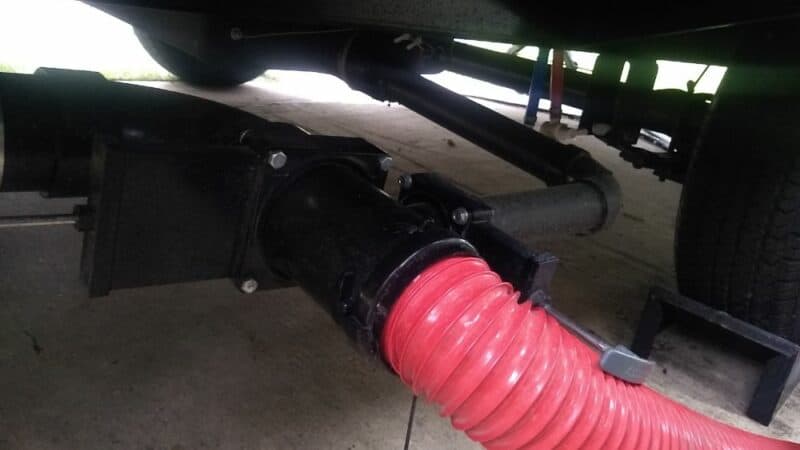I recently had the privilege of attending a free seminar by Sue “the Queen of Poo,” RV Tech and founder of Royal Flush RV. Sue Rasmussen is a delightful, well-spoken certified RV technician who specializes in RV tank cleaning. Yup, you heard that right. She’s a trim 5’5″ with a silver smile and a gentle handshake, but she’s got the guts of a grizzly! She even shared one particularly squeamish story involving copious amounts of maggots I simply don’t have the courage to repeat here …
Now, Sue puts in a lot of work to offer these free educational seminars to RVers, so I’m not going to parrot all her talking points. I learned quite a bit myself! My recommendation to you is to attend a seminar yourself, where you can put your questions directly to an expert.
Why Does My RV Gray Tank Smell So Bad?

But Sue did mention something I’ve advised myself on this blog, and I wanted to write a quick tip highlighting this point. Are you ready?
Gray tanks typically smell worse than black tanks.
Hard to believe, I know. Why does the gray tank smell so bad?
First, you might be ignoring it. As RVers, we tend to be hyperaware of the black tank while casually neglecting the gray tank. We might use the gray tank with the valve open, let the tank bake over a hot weekend, fail to add tank-cleaning enzymes, or forget to rinse the tank after it drains. We think that because soapy water went down the drain, the gray tank must be somewhat clean, right?
Wrong! Consider everything else that went down the drain: greases, oils, hair, dirt, sediment, food, chemicals, dandruff (and the occasional lost wedding ring). The greases and oils rise to the top of the water in the tank, where they coagulate and coat the walls of the tank with a rancid slime. This putrid organic slurry is a breeding ground for black mold and other unmentionables. And if you use your gray tank with the valve open, the soapy liquid runs ahead while the nasty solids get left behind.
Unfortunately, merely draining the tank doesn’t scour the walls of this slime. Over time, the slime builds up. It shorts out tank fill sensors, adds dead weight, and stinks to high heaven. Adding a fume extractor vent cap or replacing your air admittance valve may help extract or block odors, but they don’t eliminate the root cause.
It’s a rotten system, I know. I even apologized for it on behalf of the entire industry! But for now, it’s what we’ve got.
5 Rules for Taking Care of Your Gray Tank
So give your gray tank the same TLC you give your black tank.
- Don’t use your tanks with the valves left open. Fill the tanks to at least 2/3 full and then drain. Drain your black, then gray, then rinse both.
- Fill your waste and holding tanks with a few gallons of water before use. Water is your friend!
- Use a fume extractor cap on your tank vent pipe[s] to increase venting airflow and eliminate stagnant, stinky smells.
- Don’t kill the bacteria in your tanks; feed them! Use enzyme-based tank cleaners to break down stubborn solids.
- Place mesh strainers over your sink and shower drains.
- Have your tanks professionally cleaned annually or biannually.
I highly encourage the last point; get your tanks professionally cleaned. OEM tank “flush” systems don’t scrub; they just rinse. Ice cubes may break up large masses, but they don’t scour your sidewalls. There’s simply no way you can thoroughly clean the inside of your holding tank with a tank wand or the Geo Method or some other DIY solution; you need water under high pressure, and that’s where a professional comes in. Think of it like changing the oil in your car – and remember, ignoring the problem doesn’t make it go away!
Leave a Reply